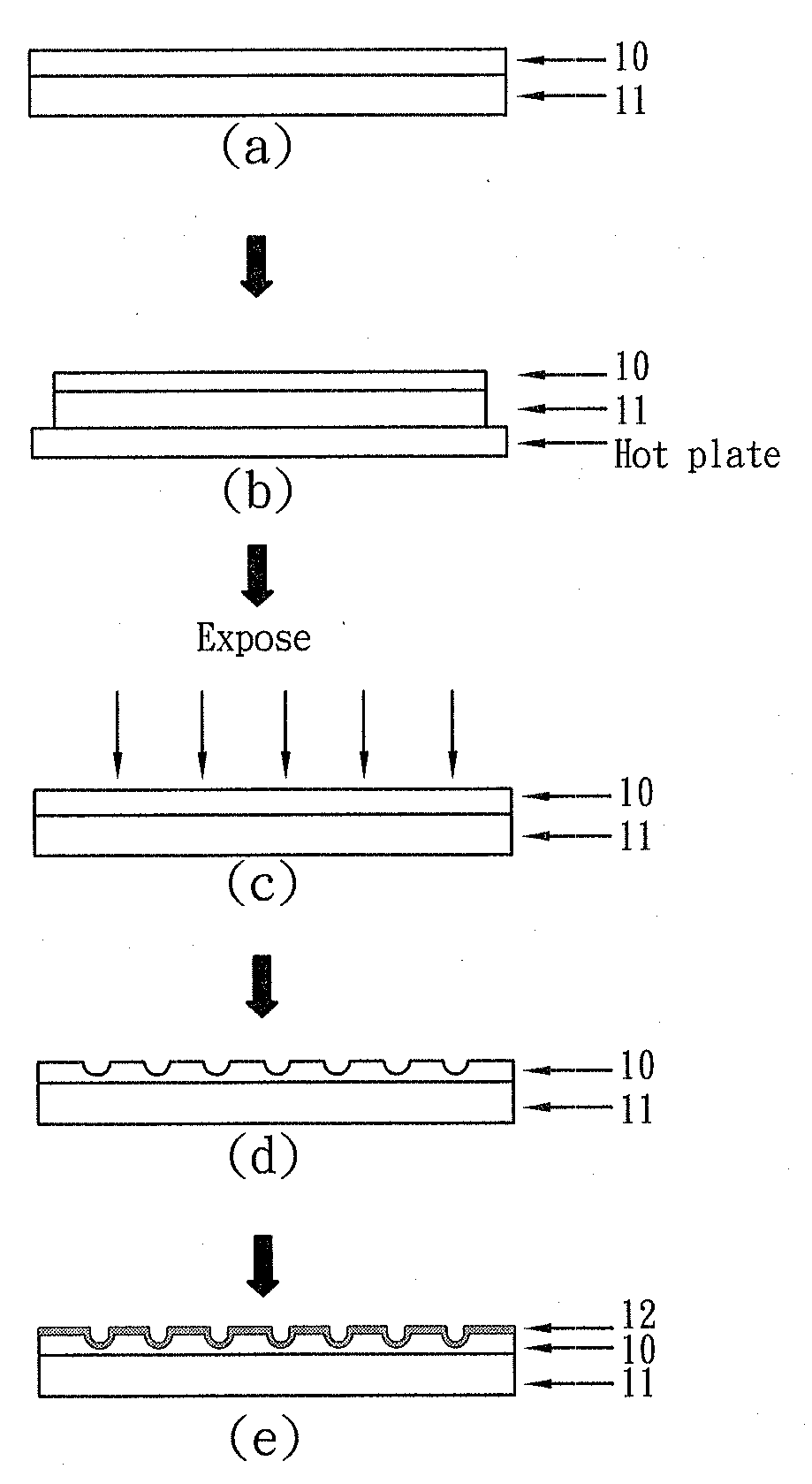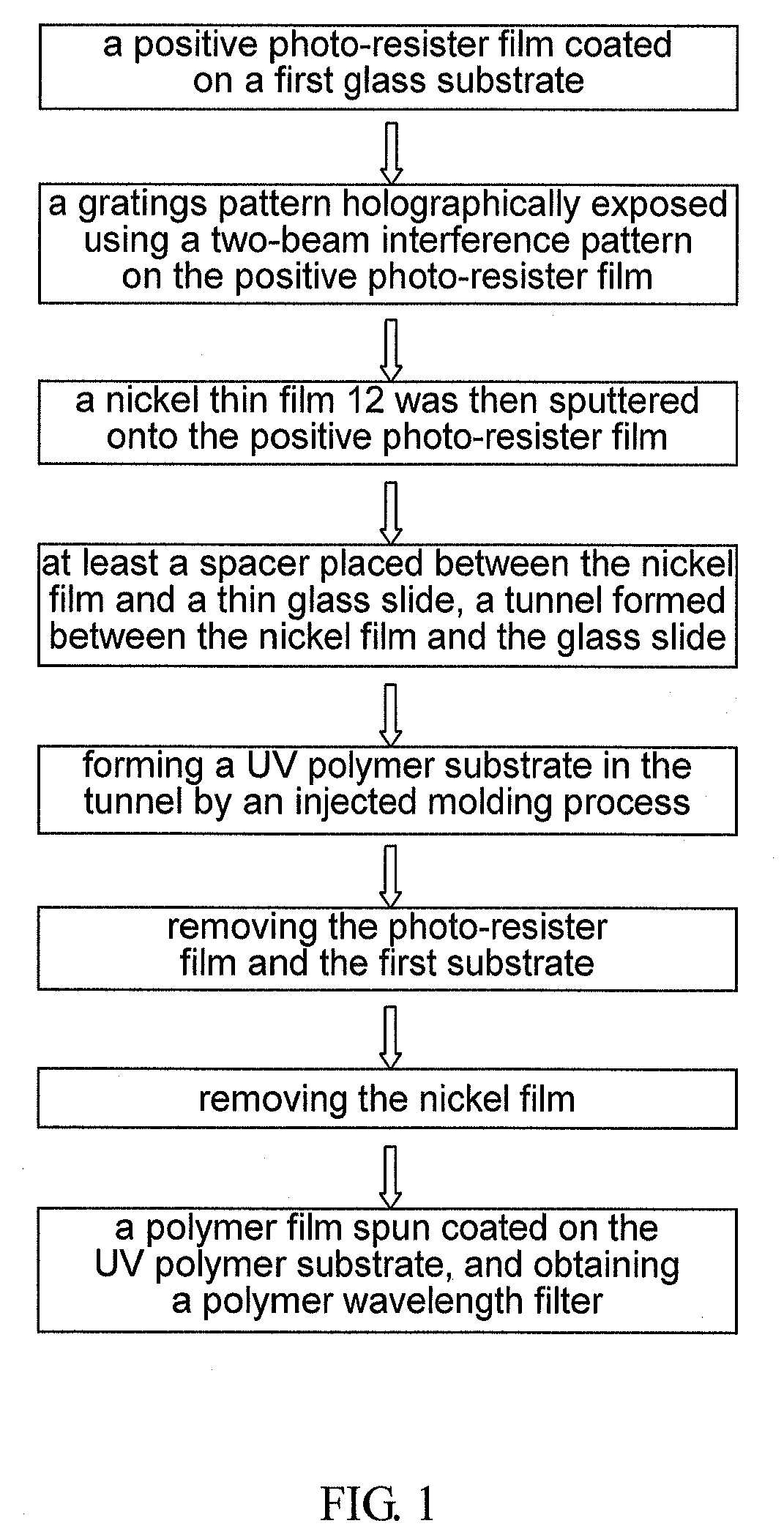Method for fabricating polymeric wavelength filter
a wavelength filter and polymer technology, applied in the direction of instruments, optical elements, vacuum evaporation coating, etc., can solve the problems of unfeasible narrow transmission bandwidth, long coupling length, and significant grating depth affecting the performance of optical devices, and achieve good aspect ratio of grating pattern
- Summary
- Abstract
- Description
- Claims
- Application Information
AI Technical Summary
Benefits of technology
Problems solved by technology
Method used
Image
Examples
Embodiment Construction
I. The Concept of the Present Invention
[0017]The present invention of forming gratings patterns on the UV polymer involves three processing steps. First, a gratings pattern is holographically exposed using a two-beam interference pattern on a positive photo-resister film. A 20-nm-thick nickel thin film is then sputtered onto the positive photo-resister film to obtain a nickel mold having grating pattern. This nickel mold on the photo-resister film then can be subsequently used to transfer the final gratings pattern onto a UV polymer (UV cure epoxy polymer). The following sections describe the process involved in grating fabrication.
II. The Basic Fabrication Process of the Present Invention
[0018]Referring to FIGS. 1 and 2, the basic method for fabricating the polymer wavelength filter comprises following steps:
[0019](A) a positive photo-resister film 10 coated on a first glass substrate 11;
[0020](B) a gratings pattern holographically exposed using a two-beam interference pattern on t...
PUM
| Property | Measurement | Unit |
|---|---|---|
| Temperature | aaaaa | aaaaa |
| Length | aaaaa | aaaaa |
| Length | aaaaa | aaaaa |
Abstract
Description
Claims
Application Information
 Login to View More
Login to View More - R&D
- Intellectual Property
- Life Sciences
- Materials
- Tech Scout
- Unparalleled Data Quality
- Higher Quality Content
- 60% Fewer Hallucinations
Browse by: Latest US Patents, China's latest patents, Technical Efficacy Thesaurus, Application Domain, Technology Topic, Popular Technical Reports.
© 2025 PatSnap. All rights reserved.Legal|Privacy policy|Modern Slavery Act Transparency Statement|Sitemap|About US| Contact US: help@patsnap.com



